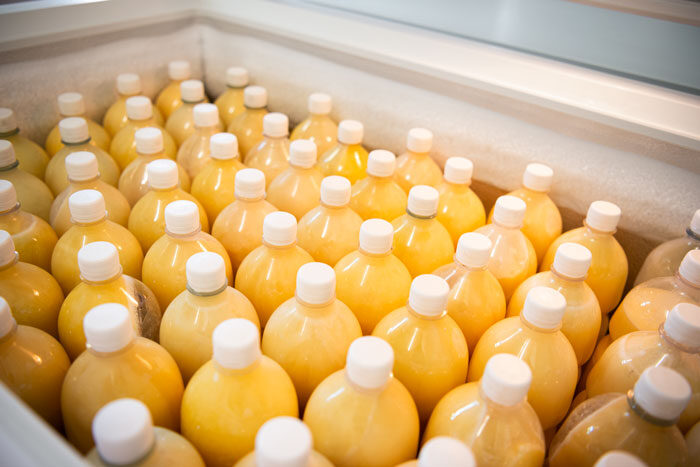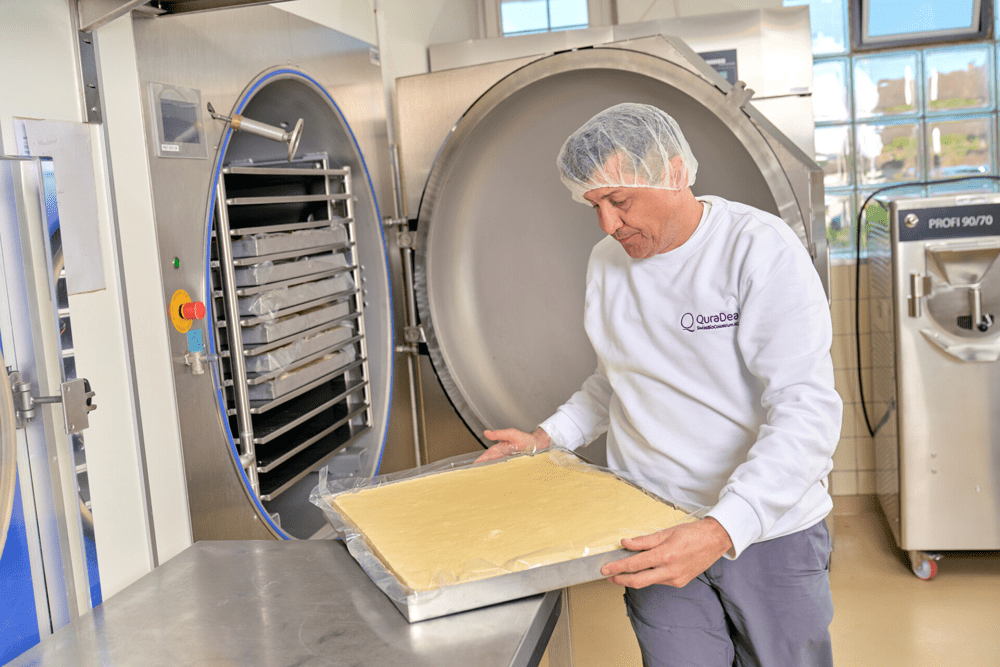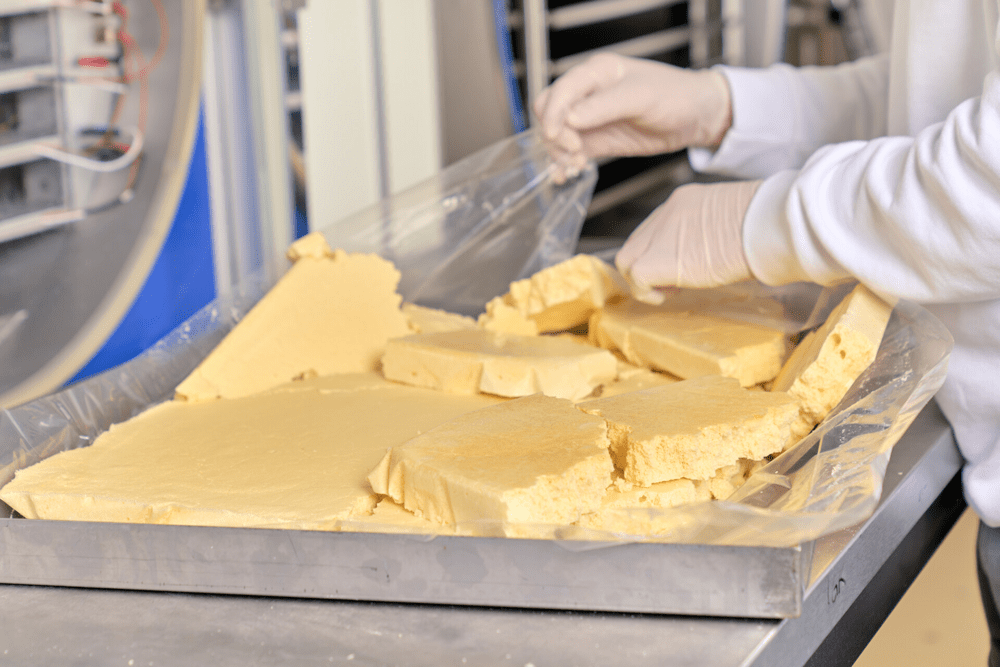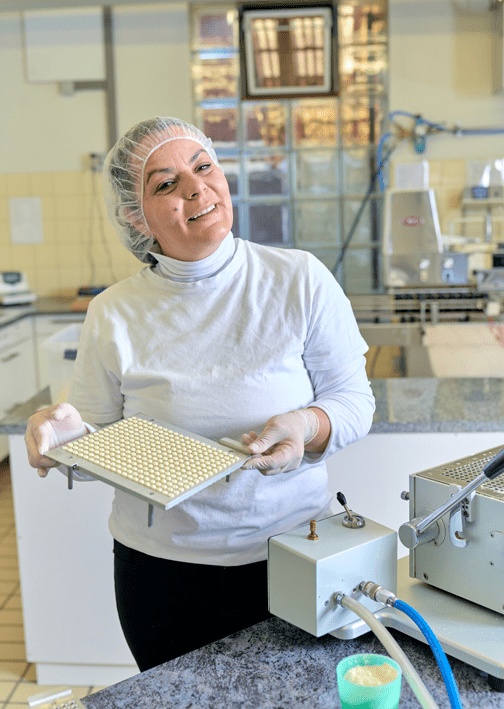The aim of our colostrum processing is to preserve the original organic quality of the colostrum as far as possible. In order to preserve the valuable raw material, the production steps are reduced to the bare essentials. Basically four different processing steps can be distinguished which we will present to you on this webpage.
Colostrum Processing

1. The fractionation of colostrum is questionable.
The processing of the raw colostrum is carried out by us without any fractionation at all. Most other manufacturers separate the fat and casein fractions. This reduces the colostrum to its serum which actually corresponds to whey proteins. The serum then gets cold filtered and offered as a liquid colostrum product.
Whole colostrum however consists of more than just the whey proteins. Also the physiologically important caseins and the whole spectrum of fatty acids belong to a bioactive colostrum. The fractionation removes important ingredients from the colostrum whereby synergistic interactions are lost.
Fat in colostrum:
- the important fat-soluble vitamins (A, D, E, K) adhere to the surface of fat particles
- fat in colostrum contains many unsaturated fatty acids
- natural hormones are bound to the fat
particles as well
- fat has a protective effect during the processing of raw colostrum.
- in the digestive process fat protects essential ingredients from stomach acids
- the Basel milk allergy study shows that only whole milk has a preventive effect on allergies and asthma whereas this does not apply to defatted milk.
Casein in colostrum:
- casein binds the calcium and magnesium ions of colostrum; it also contains:
- 66% of the total calcium
- 53% of the total magnesium
- 50% of the organic phosphorus

2. The sterilisation of colostrum is compulsory
Sterilisation is a necessary step in processing raw colostrum which guarantees food safety. Colostrum as the first milking can be more contaminated with germs than milk after the 2-month lactation break of a cow. This is why federal food legislation of all countries demand an adequate germ treatment. This is usually implemented by filtration techniques or pasteurisation. Both processes impair the ingredients of the raw colostrum.
Germ monitoring
for our cow colostrum optimal does not require either of the two sterilisation
processes. Elaborate microbiological analysis of the raw colostrum only release
the purest colostrum donations for direct freeze-drying which makes the need for germ
treatment redundant.
The microbiological quality of every batch gets analysed in a labratory.

3. The drying of colostrum must be gentle
The drying of the sterilized colostrum allows the storage of the powder for a few years as well as the production of capsules, tablets and cosmetics. Spray drying is mainly used in connection with large scale industrial production in the USA and New Zealand. The continuous process is inexpensive but deminishes the quality of the product. It denatures the ingredients through high pressure and high temperatures. Analyses show that freeze drying is clearly the more gentle drying method.
QuraDea Colostrum gets freeze-dried exclusively in small batches.

4. standardization has a denaturing effect
With the aid of industrial colostrum processing methods products can be offered which have been fractionated and reassembled. By enriching or standardising certain ingredients colostrum products with a defined IgG content can then be offered. To present the high content of immunoglobulins as the measurement of colostrum quality is a widespread and misleading practice. The enrichment of colostrum takes place at the expense of other important vital substances. Thus the quality and bioactivity of the wholesome colostrum will be impaired.
The aim of our colostrum processing is to preserve the valuable raw material and maintain the original organic quality of the colostrum as far as possible.